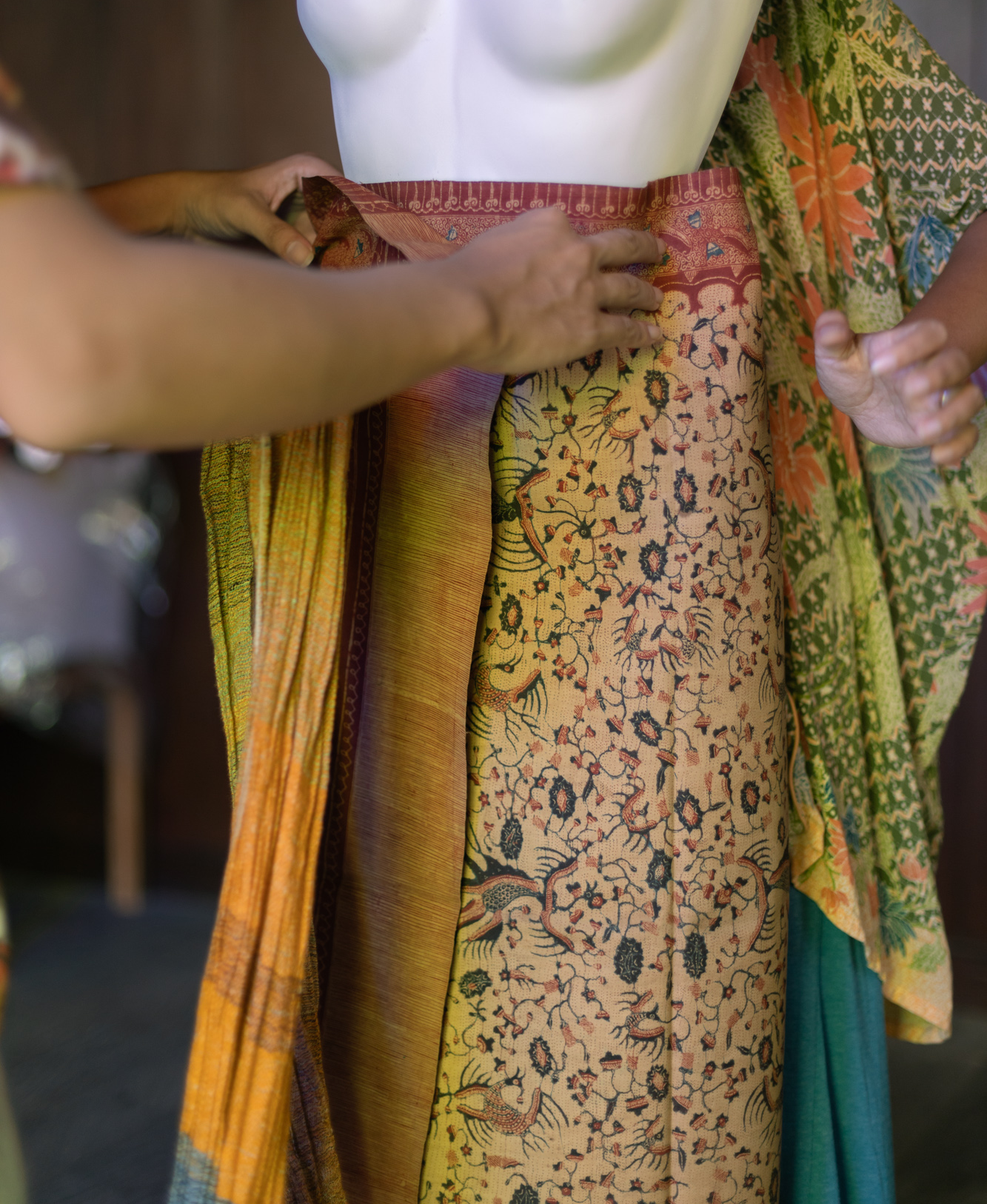Unraveling Palembang’s Batik

Image Source: Tropenmuseum
Musi River is the heart of Palembang. On the river side of Musi, immigrants from all around the globe arrived in the 13th century. One of the groups of these immigrants were Muslim merchants from Yemen and India. The group from Yemen came from Hadramaut, the area where most of Indonesians with Arab-descents have their ancestral roots there. These Arab-India immigrants were known for their business in garment and spice. This is where one of the most interesting wastra in Indonesia was born; later on, became a mystery of why and how it was made.

Antique Collection of Pithecanthropus
Limar, a combination of ikat and songket, of Palembang. Ikat motifs are influenced by patola textiles from Gujarat, while flower motif on songket is Muslim-Arab-influenced.
Kain Jepri is Palembang’s lesser known batik that has its own charm and signature. It also goes by the name Jupri. Jepri or Jupri comes in extended size; always beyond 2 metres. The color palette of Jepri is always red and black, sometimes with a hint of indigo blue over creamy background. On a piece of Jepri, one can see the encounter of Melayu and Arab through the pattern.

Jepri or Jupri of Palembang with its signature cream background and flower shrubs motif.
While other batik has geometric or animal or animal-like shrubs patterns, Jepri is adorned in flowers and shrubs. The influence of Muslim Arabs can be seen from the emphasize of no living creatures; such as humans and animals. Meanwhile, the flowers represent the strong Melayu root. Flower is significant in Melayu culture where every ritual from life to death always has flower during the ritual process. The extended length of Jepri too makes Jepri beyond a hip wrapper, but some also functions as a female head cover.


What makes Jepri interesting is that no one knows who started Jepri or the location of the batik house where Jepri can be found. Today, there is no batik house in Palembang that dedicates itself to make Jepri. However, the trace of Jepri are scattered to the east of Palembang; all the way to West Java. In Cirebon and Garut, Jepri has been famous for its humble and versatile batik pattern that the Muslims can wear. These days, the travel of this batik from Musi river to other parts of Indonesia has become the testament of how adaptable and accepting textile is.

